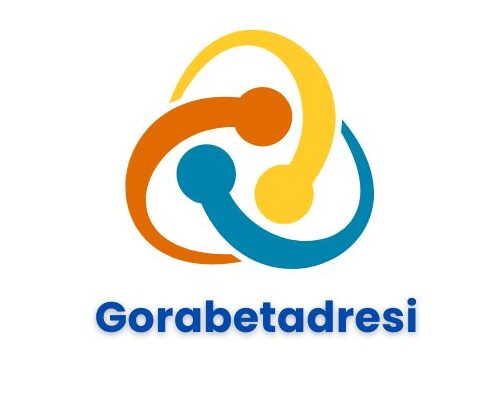Electronic Benefit Transfer (EBT) is a vital program in the United States that helps millions of individuals and families access essential food and financial assistance. Recent developments in Electronic Benefit Transfer have caught the attention of recipients and policymakers alike, as changes aim to enhance efficiency, security, and accessibility. Whether you’re an Electronic Benefit Transfer recipient, a community advocate, or simply curious about policy updates, this blog breaks down the latest news, what it means, and how it could affect you.
What is EBT? A Quick Overview
If you’re unfamiliar with the program, EBT is a system where state agencies distribute government benefits electronically. EBT cards, which function like debit cards, allow recipients to access programs like the Supplemental Nutrition Assistance Program (SNAP) and Temporary Assistance for Needy Families (TANF). Beneficiaries can use their Electronic Benefit Transfer cards to purchase approved food items and withdraw cash benefits (for TANF participants) at participating retailers and ATMs.
This year alone, it’s estimated that over 41 million Americans rely on EBT for everyday necessities, making it one of the most impactful government programs today.
With that context in mind, let’s explore the recent updates and how these changes aim to improve the lives of millions of EBT users.
Recent Changes and Updates to EBT Programs
1. Enhanced Security Measures
One of the most significant developments has been the introduction of new security protocols for Electronic Benefit Transfer cards. Reports of EBT fraud, such as card skimming and unauthorized transactions, have led to growing concerns among beneficiaries.
To address these issues, state agencies are rolling out the following measures:
- Chip-Enabled Electronic Benefit Transfer Cards: Like traditional bank cards, Electronic Benefit Transfer cards are now being upgraded with EMV chips to drastically reduce fraud risk. Chip-enabled cards make it harder for criminals to steal card data compared to older magnetic stripe cards.
- Fraud Alert Systems: Several states are employing real-time fraud detection systems that notify users of suspicious transaction activity. This allows beneficiaries to take action immediately in case of unauthorized use.
- Two-Factor Authentication Options: Some states are piloting two-step verification systems to add an extra layer of protection during online transactions.
These updates ensure that funds reach the hands of those who need them most without the fear of theft.
2. Pandemic-Era Benefits Extensions
During the COVID-19 pandemic, programs like SNAP expanded benefits to cover more households and offer higher monthly allotments. While some of these provisions have expired, several states continue efforts to extend pandemic-era benefits.
Key updates include:
- Emergency Allotments: While federal emergency allotments have officially ended, some states are continuing temporary increases in SNAP benefits to ensure food security for vulnerable populations.
- P-EBT (Pandemic EBT) Updates: School-age children and young adults may still qualify for P-EBT benefits for the 2023-2024 school year, especially in areas where schools continue to face food service disruptions.
Check your state’s specific guidelines to see if you’re eligible for extended benefits.
3. Mobile Payment Integration
Another groundbreaking development is the integration of Electronic Benefit Transfer payments into mobile wallets and apps. States like New York and California are leading the charge in allowing beneficiaries to link their EBT cards to payment platforms such as Apple Pay, Google Pay, and Samsung Pay.
What does this mean for EBT users?
- Convenience: No need to carry a physical card—mobile payments can simplify transactions at approved retailers.
- Enhanced Security: Contactless payment methods reduce the potential for skimming and theft at the point of sale.
- Wider Acceptance: This integration encourages more retailers to participate in the program, providing greater shopping flexibility.
4. Online Grocery Purchase Expansion
Online grocery shopping has become a necessity for millions, especially for those with mobility challenges or limited nearby shopping options. The USDA continues to expand its online purchasing program, allowing SNAP benefits to be used at major retailers like Walmart, Amazon, and smaller, local grocers.
Recent updates include:
- New partnerships with regional grocery chains and farmer’s markets, enabling users to buy fresh and local produce.
- Streamlined app experiences from retailers designed specifically for SNAP beneficiaries, making the process user-friendly.
This expansion not only modernizes the program but also improves access to healthier food choices.
5. Modernized Customer Support
To improve user experience, many states are upgrading their Electronic Benefit Transfer support services with user-friendly tools for card management.
- Upgraded Mobile Apps: States like Michigan and Texas have rolled out apps with features like balance checking, transaction histories, and even payment reminders.
- Chatbots and AI Assistance: Advanced chatbots now provide 24/7 assistance for commonly asked questions, reducing the need for long call center wait times.
- Language Support: Hotlines and apps are being equipped with multi-language capabilities to better serve diverse EBT user communities.
The Benefits of These EBT Changes
These updates reflect a pivotal shift in how government programs address economic disparities. By improving security, accessibility, and user convenience, EBT changes can enhance the user experience for millions of households.
Here’s how these developments directly benefit recipients:
- Peace of Mind with reduced fraud risks through secure transactions.
- Greater Flexibility in how and where benefits are spent.
- Improved Access to groceries and customer support.
- Equal Opportunity for more families to meet essential needs, especially in underserved communities.
How to Stay Updated on EBT Programs
Government programs like EBT are constantly evolving, and staying informed is crucial. Here are tips to ensure you’re always in the loop:
- Sign up for Alerts from your state’s EBT or SNAP website for real-time updates.
- Contact EBT Customer Service should you have any specific questions about benefits or updates.
- Follow Trusted News Outlets that cover public assistance programs.
- Join Community Groups focused on EBT or food access advocacy to exchange tips and recommendations.
Taking the Next Step
The modernization of EBT systems reflects a broader effort to make assistance programs more equitable and efficient. These changes are not only a testament to the role technology plays in improving accessibility but also a reminder of the importance of these programs in reducing hunger and providing financial stability for millions of Americans.
If you’re an EBT user—or know someone who is—be sure to explore these new features and take full advantage of the benefits they offer.
For more insights on navigating public assistance programs and other related updates, sign up for our newsletter.
FAQs
1. What is EBT?
EBT, or Electronic Benefit Transfer, is a system that allows individuals to access government assistance benefits such as SNAP (Supplemental Nutrition Assistance Program) using a card similar to a debit card.
2. How do I check my EBT balance?
You can check your EBT balance by logging into your state’s EBT website, using the official mobile app (if available), or calling the EBT customer service number found on the back of your card.
3. What should I do if my EBT card is lost or stolen?
If your EBT card is lost or stolen, contact your state’s EBT customer service immediately to report it and request a replacement card.
4. Are there restrictions on what I can purchase with EBT?
Yes, EBT funds, particularly SNAP benefits, can only be used to buy approved food items such as fruits, vegetables, dairy, meat, and bread. Items like alcohol, tobacco, and non-food products are not eligible for purchase using EBT.
5. Can I use my EBT card online?
Many states now allow EBT users to shop online with major retailers for groceries, but availability and participating retailers may vary by region. Stay updated by visiting your state’s EBT program website.
6. How can I ensure that I stay informed about updates to EBT programs?
You can sign up for alerts through your state’s EBT or SNAP website, follow trusted news outlets, and join community advocacy groups focused on food assistance programs.











